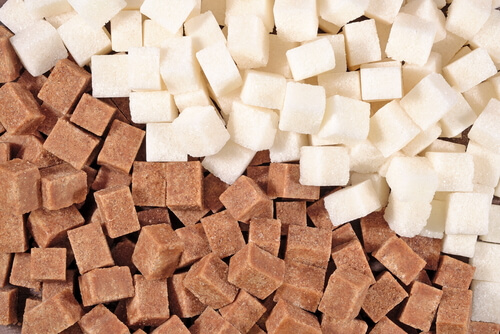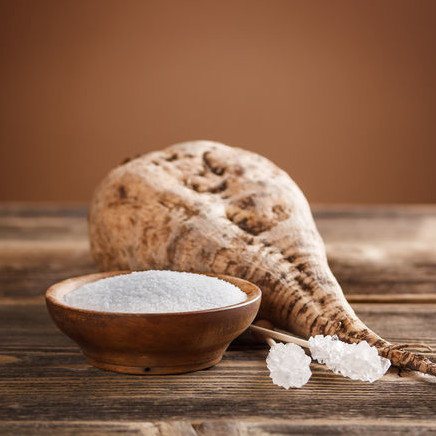Learning about beet sugar vs cane sugar can help bakers decide which suits their needs better.
Learning about beet sugar vs cane sugar can help bakers decide which suits their needs better.
Blog Article
Discover the Uses and Benefits of Beet Sugar Vs Cane Sugar in Your Daily Diet
Discovering the distinct high qualities of beet and cane sugar discloses greater than just their sweetening capabilities; it highlights their distinct effects on wellness and cookeries. Beet sugar, known for its refined flavor, is often favored in fragile treats, whereas cane sugar, with its hint of molasses, adds splendor to durable meals. Each kind holds its very own nutritional profile and glycemic ramifications, welcoming a deeper understanding of their roles in a well balanced diet plan and lasting usage practices.
Origin and Manufacturing Processes of Beet and Cane Sugar

The unique climates and soil kinds needed for growing sugar beets and sugarcane contribute to differences in their cultivation techniques and geographic distribution, influencing the economics and sustainability of their production. beet sugar vs cane sugar.
Nutritional Comparison In Between Beet Sugar and Cane Sugar
Regardless of stemming from different plants, beet sugar and cane sugar are nutritionally very similar, both mostly being composed of sucrose. Each gives concerning 4 calories per gram, converting to roughly 16 calories per teaspoon. Structurally, both sugars are composed of approximately 99.95% sucrose, with marginal quantities of other materials like moisture and trace minerals, which do not dramatically modify their dietary accounts.

Eventually, when choosing between beet sugar and cane sugar based on dietary material alone, both offer identical benefits and downsides as they are basically forms of the same molecule-- sucrose, supplying fast power without other nutrients.
Effect On Health: Glycemic Index and Caloric Content
Discovering additionally into the impacts of beet sugar and cane sugar on health and wellness, it is crucial to consider their glycemic index and caloric content. The glycemic index (GI) of both beet and cane sugar is around 65, categorizing them as high-GI foods, which can trigger quick spikes in blood sugar levels.
Each sort of sugar has around 4 calories per gram, making their calorie material review matching. For those keeping track of calorie consumption, particularly when managing weight or metabolic health conditions, comprehending this equivalence is essential (beet sugar vs cane sugar). However, excessive intake of any type of high-calorie, high-GI food can add to health concerns such as weight problems, cardiovascular disease, and insulin resistance.
Environmental and Economic Considerations of Sugar Manufacturing
Beyond wellness effects, the manufacturing of beet and cane sugar likewise increases considerable environmental and financial problems. Sugar beet growing often tends to call for cooler climates and has a lower geographical footprint contrasted to sugar cane, which flourishes in tropical areas. However, both plants are intensive in terms of water use and land line of work, possibly resulting in deforestation and water scarcity. Economically, the worldwide sugar market is extremely unstable, affected by adjustments in worldwide trade plans and aids. Numerous countries incentivize sugar manufacturing with economic assistance, skewing market value and affecting small farmers adversely.
Furthermore, the use of chemicals and fertilizers in both beet and cane sugar farming can cause dirt deterioration and contamination, additional affecting biodiversity and neighborhood water bodies (beet sugar vs cane sugar). The selection between growing sugar beet or cane typically depends upon local environmental problems and financial elements, making the sustainability of sugar manufacturing a complicated issue
Culinary Applications and Flavor Distinctions
While the ecological and economic elements of visit the site sugar manufacturing are without a doubt significant, the option in between beet and cane sugar additionally affects cooking applications and taste accounts. Beet sugar, acquired from the sugar beet plant, is recognized for its incredibly neutral taste. This makes it a versatile active ingredient in cooking, where it does not modify the flavor of various other elements. It liquifies promptly and is suitable for use in cakes, cookies, and pastries.
Cane sugar, drawn out from sugarcane, frequently preserves molasses traces, which pass on a distinct splendor and depth. The small variation in dampness material in between beet and cane sugar can influence the appearance and consistency of meals, making cane sugar a favored selection for details recipes that benefit from its special properties.

Final Thought
In verdict, both beet and cane sugar have distinct beginnings and manufacturing procedures, using comparable nutritional profiles with slight differences in sodium content and flavor. While their impact on wellness, specifically pertaining to glycemic index and calories, is equivalent, the option between them typically boils down to environmental, economic variables, and details great post to read culinary demands. Comprehending these elements can assist consumers in making notified decisions that straighten with their health and wellness objectives and flavor choices.
Report this page